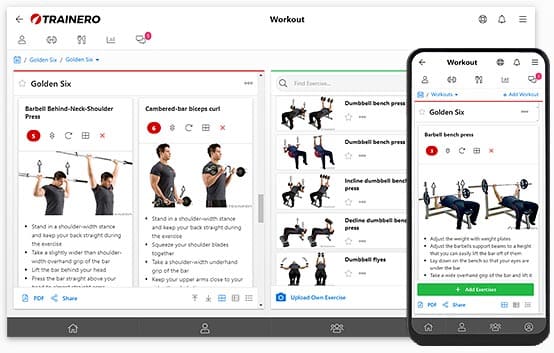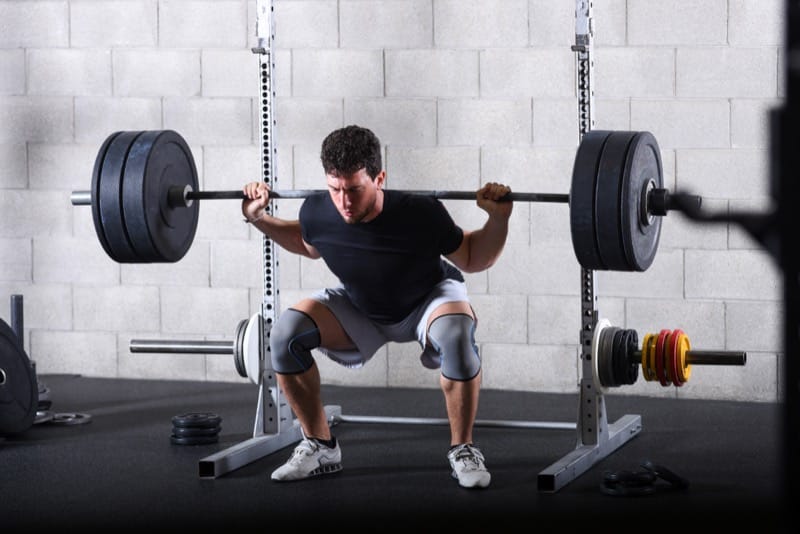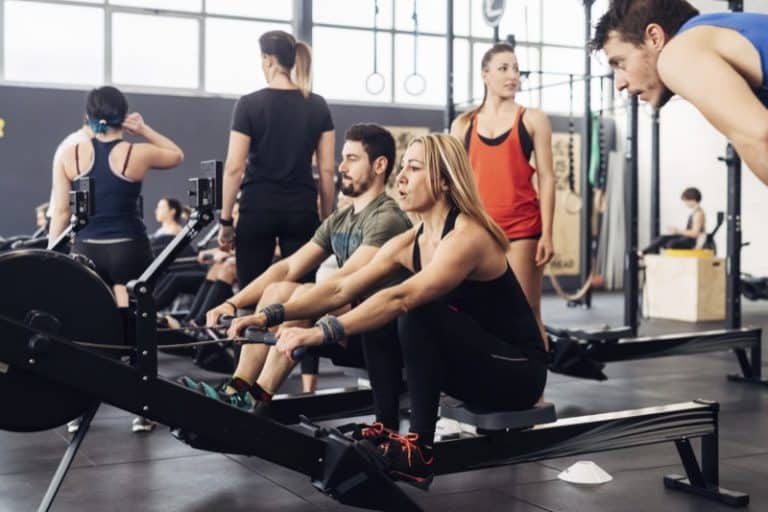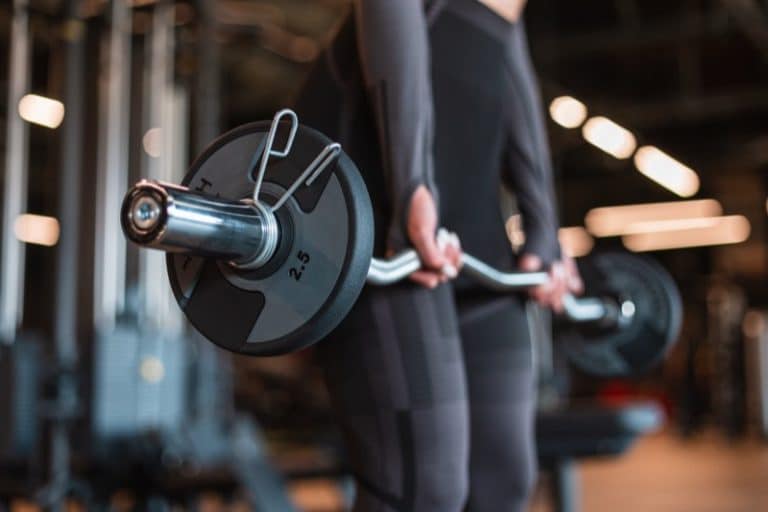RPE vs RIR: Which Intensity Metric Should You Use for Smarter Strength Training?
When it comes to strength training, the choice of intensity metric is pivotal for crafting a training program that maximizes strength gains and muscle growth. Two prevalent metrics in this realm are RPE (Rate of Perceived Exertion) and RIR (Reps in Reserve). Both provide unique insights into workout intensity, helping lifters and coaches tailor their sessions for optimal results. Whether you’re an experienced lifter focused on strength or someone beginning their journey in resistance training, understanding how to effectively use RPE and RIR can prevent burnout and overtraining, ensuring a smarter approach to strength training.

Unlock your fitness potential with Trainero! Get a 14-day free trial and access personalized workout plans, expert coaching, and progress tracking—all in one app. No commitments, just results. Start your free trial today and take your fitness journey to the next level!

Understanding RPE and RIR
What is RPE?
The Rate of Perceived Exertion (RPE) is a subjective intensity metric used to gauge the level of effort during a workout. Originating from the need to quantify how hard an exercise feels, the RPE scale typically ranges from 1 to 10, with 1 representing minimal exertion and 10 indicating maximal effort. Using RPE allows lifters to adjust their training intensity based on daily performance and fatigue levels, rather than adhering strictly to percentage-based training. For example, performing a squat at RPE 8 means the lifter perceives they could perform two more reps before reaching failure, making it a versatile tool for managing training stress and progression.
What is RIR?
Reps in Reserve (RIR) is another popular metric that measures the proximity to failure in a given set. Unlike RPE, which is based on perceived exertion, RIR focuses on the number of reps left in the tank before reaching failure. For instance, a lifter performing a bench press with an RIR of 2 would stop two reps short of their maximal effort. This approach helps in fine-tuning training intensity and volume, allowing for precise adjustments without constantly pushing to failure. RIR is particularly useful in phases of training aimed at either strength or hypertrophy, providing a clear framework to avoid overtraining while still achieving optimal progression.
Comparing RPE and RIR
When comparing RPE and RIR, both metrics serve to enhance the effectiveness of a training program by offering insights into training intensity. RPE is advantageous for its subjective nature, allowing lifters to gauge exertion levels across different exercises, like squats or accessory lifts, and adjust accordingly. Meanwhile, RIR provides a more objective measure of proximity to failure, making it easier to quantify and track progress over time. While some lifters prefer using RPE for its flexibility, others gravitate towards RIR for its precision. Ultimately, the choice between RPE or RIR often depends on personal preference, training goals, and the specific phase of training one is in.
How to Use RPE in Your Training Program
Implementing the RPE Scale
Implementing the RPE scale in your training program can be a game-changer for managing workout intensity and ensuring progress without overtraining. To start using RPE, familiarize yourself with the RPE scale, where each number corresponds to your perceived exertion level during an exercise. For instance, an RPE of 6 indicates a moderate effort, while RPE 9 suggests nearing maximal exertion. Begin by using RPE to assess your performance on major lifts such as squats and bench presses. Adjust your intensity based on daily energy levels and fatigue, allowing for flexible training sessions that adapt to your body’s needs.
RPE for Different Workout Goals
Using RPE can cater to various workout goals, whether focused on strength or hypertrophy. For strength training, aim for sets at an RPE 8 or 9, where you’re exerting significant effort but staying just short of failure. This approach maximizes strength gains without the constant risk of burnout. For muscle growth, RPE can be leveraged to maintain a slightly higher volume of repetitions in reserve, ensuring sufficient workload without overtraining. By using RPE, lifters can tailor their intensity across different phases of training, aligning their efforts with specific goals and adjusting based on how their body responds to the stress of resistance training.
Adjusting Weight Based on RPE
Adjusting weight based on RPE allows lifters to fine-tune their training program dynamically. If a set feels easier than anticipated (e.g., hitting an RPE 6 when aiming for RPE 8), you can increase the weight to reach the desired intensity. Conversely, if a workout feels harder (such as an unintended RPE 9), reducing the weight can help prevent overtraining. This adaptability makes RPE a valuable tool for coaches and athletes alike, promoting smarter strength training by focusing on consistent progress and recovery. By regularly assessing and adjusting your weights, you ensure that each training session is effective and aligned with your strength or hypertrophy objectives.
Using RIR for Effective Muscle Growth
Understanding Reps in Reserve
The concept of Reps in Reserve (RIR) is fundamental to optimizing muscle growth and strength gains in strength training. RIR is a metric that indicates how many repetitions you have left before reaching failure in a set. For instance, during a squat or bench press, if you stop with an RIR of 2, it means you could have performed two more reps before failing. This approach allows lifters to modulate training intensity accurately, ensuring they are not constantly pushing to failure. By understanding RIR, both novice and experienced lifters can design smarter strength training programs, avoiding the pitfalls of overtraining and burnout while still pushing for maximal gains.
Training to Failure vs. RIR
Training to failure and using Reps in Reserve (RIR) represent two distinct approaches to managing intensity in a workout. Training to failure involves performing repetitions until no more can be completed, often leading to significant fatigue and increased risk of overtraining. In contrast, RIR-based training allows for stopping short of failure, maintaining a few reps in reserve. This method balances intensity and recovery, facilitating muscle growth without excessive training stress. While training to failure can be applied occasionally for certain phases of training, consistently using RIR offers a sustainable way to achieve strength and hypertrophy goals, enhancing long-term progress and minimizing the risk of burnout.
Assessing Proximity to Failure
Assessing proximity to failure is crucial in implementing an effective RIR strategy in strength training. This assessment involves understanding how close you are to your maximal effort in a given set, a skill that develops with practice and experience. Coaches often guide lifters in estimating RIR by observing their form and speed of execution during lifts. As you become more attuned to your body’s signals, you can accurately gauge when to stop a set to optimize muscle growth without reaching the point of detrimental fatigue. By mastering the assessment of proximity to failure, you can tailor your training program to harness the benefits of RIR, ensuring consistent strength gains and reducing the likelihood of overtraining.
Pros and Cons of RPE and RIR
Benefits of Using RPE
Using the Rate of Perceived Exertion (RPE) in strength training offers several advantages, particularly in terms of flexibility and adaptability. The RPE scale allows lifters to adjust their training intensity based on how they feel during each session. This subjective measure helps in tailoring workouts to daily fluctuations in energy levels and recovery status, preventing overtraining and burnout. Experienced lifters find RPE beneficial for maintaining consistent progress without adhering strictly to a pre-set weight or number of reps. This adaptability makes RPE a valuable tool for both strength and hypertrophy phases, enabling smarter strength training by considering the lifter’s immediate exertion levels.
Drawbacks and Limitations of RPE
Despite its benefits, the RPE metric is not without its limitations. One major drawback is its subjective nature, which can lead to inconsistencies, especially among novice lifters who might struggle to accurately assess their level of exertion. This subjectivity can affect the precision of the training program, potentially leading to suboptimal strength gains. Additionally, external factors like stress or poor sleep can influence an individual’s perception of effort, leading to fluctuating RPE ratings that may not accurately reflect true workout intensity. Therefore, while RPE offers flexibility, it requires a certain level of experience and self-awareness to be used effectively.
Pros and Cons of RIR for Strength Gains
Reps in Reserve (RIR) provides a more objective approach to measuring workout intensity, offering clear guidelines on how close to failure a lifter should train. This clarity can enhance strength gains by ensuring that workouts are neither too easy nor too taxing. However, like RPE, RIR has its challenges. Accurately assessing the number of reps left in reserve requires experience and can be difficult during high-intensity sets, such as those at or near 1RM. Additionally, consistently stopping short of failure might not push some lifters enough, potentially limiting maximal strength development if not periodically combined with training to failure.
Which Metric is Best for Strength Training?
Factors to Consider When Choosing
Deciding between RPE and RIR largely depends on individual preferences, training goals, and experience levels. Lifters focused on strength and power might prefer the precision of RIR, while those seeking flexible intensity management may lean towards RPE. The phase of training also plays a role; for example, RIR might be more suitable during strength blocks, whereas RPE can be advantageous during hypertrophy phases. Other factors include how well the lifter can gauge their exertion levels and proximity to failure, as well as their response to training stress. Ultimately, the best choice is the one that aligns with the lifter’s objectives and personal approach to training.
Combining RPE and RIR in Your Training
For many lifters, combining RPE and RIR can provide a comprehensive framework for managing training intensity. Using RPE for main lifts like squats or bench presses allows for adjustments based on daily readiness, while RIR can fine-tune accessory work, ensuring adequate proximity to failure without overtraining. This hybrid approach enables lifters to benefit from the subjective insights of RPE and the objective measures of RIR, promoting smarter strength training. By integrating both metrics, athletes can create a balanced training program that accommodates their unique needs and maximizes strength gains and muscle growth across different phases of training.
Case Studies and Examples
In practice, many experienced lifters and coaches have successfully integrated both RPE and RIR into their training regimens. For instance, a powerlifter might use RPE during peaking phases to manage fatigue while maintaining intensity, while employing RIR in volume blocks to ensure sufficient workload without risking burnout. Similarly, a bodybuilding athlete may find RPE helpful for adjusting daily lifting intensity based on recovery status, while using RIR to guide accessory lifts, ensuring proximity to failure aligns with hypertrophy goals. These examples illustrate how a combined approach can optimize training outcomes, providing flexibility and precision tailored to individual goals and conditions.

Unlock your fitness potential with Trainero! Get a 14-day free trial and access personalized workout plans, expert coaching, and progress tracking—all in one app. No commitments, just results. Start your free trial today and take your fitness journey to the next level!











